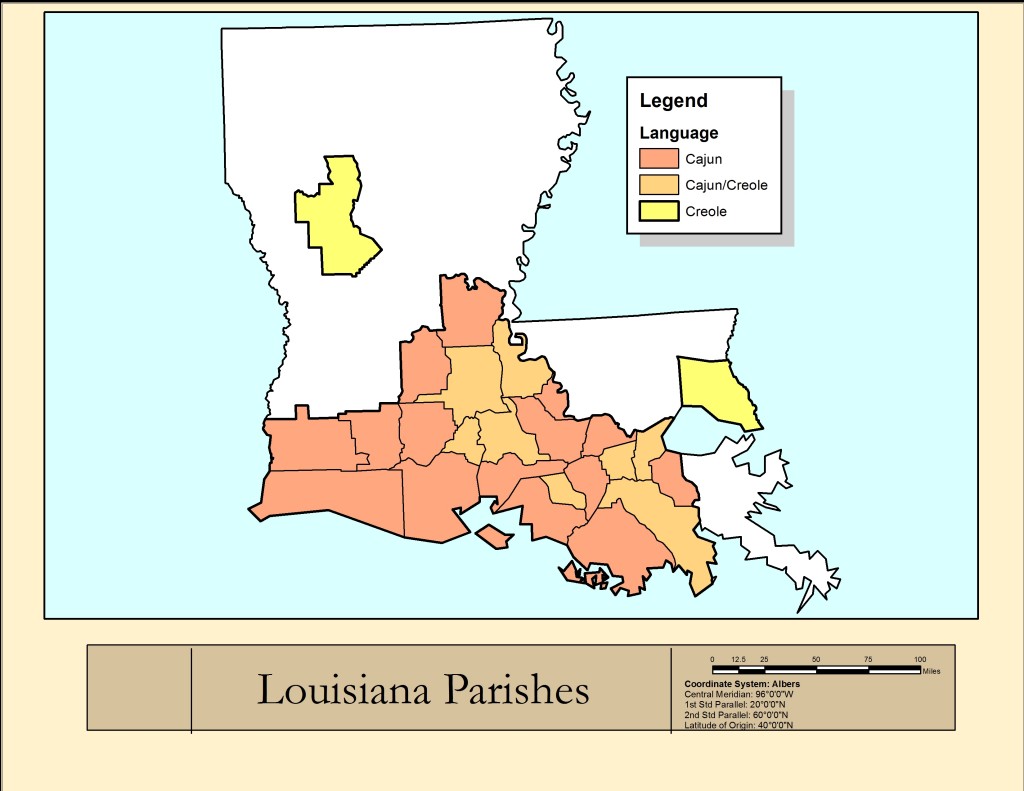Louisiana Dialects of English

The study of dialect diversity is ideally suited for researchers who live in Louisiana because a wide range of English dialects are spoken in the state. Some of the dialects we study include mainstream varieties of General American English, while others are nonmainstream and include: Southern African American English (both rural and urban varieties), Southern White English (a rural variety), Cajun English, and Creole English.
Our lab houses over 400 language samples that have been audio recorded, transcribed, and stored in an electronic archive. Most come from speakers, aged 3 to 7 years, although we also have samples from young adults and samples from parents and grandparents of LSU students.
We use these samples to learn about various dialects of English and the impact of these dialects on the characterization of childhood language disorder, language testing, and academic achievement. Driving this work is a desire to better understand how childhood language disorder manifests within all human language systems. Without this information, early identification and intervention of children who truly need services are compromised.
What is a dialect of English?
One cannot speak a language without speaking a dialect. This is because a dialect is defined as any variant of a language that is spoken by a group of individuals. Dialects can be described in terms of their linguistic structure and their societal identity. At the linguistic level, all dialects of a language have been found to reflect equal degrees of complexity (this has been proven repeatedly in the scientific literature). At the identity level, however, dialects fall on a continuum from mainstream to nonmainstream. Whether a dialect is mainstream or nonmainstream is based on value judgments within society. Within the lab, our research is linguistic in nature. Given this, all dialects are highly valued and examined as complex systems.
How do various Louisiana dialects of English differ?
Our research has shown that Louisiana dialects of English vary greatly at the perceptual level. In other words, listeners can easily detect and label various dialects that are spoken in the state, and listeners can do this after hearing only a few minutes of talking! Perceptual differences occur because dialects differ in their packaging of a host of linguistic features. These include not only features of vocabulary, grammar, and phonology (how sounds are pronounced), but also features related to each dialect's intonation and melodic line (melody).
At the level of grammar, several Louisiana dialects of English share a number of forms that are not present in General American English. Some of these include zero forms of auxiliaries (e.g., you Ø gonna get a present; he Ø walking), zero forms of verbal -s (e.g., so he sayØ ...), double modals (e.g., you might could drive there), and multiple negation (e.g., he don't got none). Shared forms can also be produced differently beteween dialects. As shown in a number of our studies, when shared forms are produced differently between dialects, the differences often relate to:
- Rate of use (how frequently a form is produced)
- Context of use (the type of utterances that contain the form)
- Function of use (the role of the form for the speaker)
Why study child language disorders in the context of dialect diversity?
Historically, children who speak nonmainstream dialects of English have been excluded from studies of childhood language disorders. Similarly, researchers who study English dialect variation routinely exclude speakers who are not considered typically developing. This has led to two very different types of researchers (psycholinguists & sociolinguists) studying language without talking to each other and without learning from each other's work. In our lab, we combine these two areas of study to learn more about how childhood language disorder manifests in different dialects of English. Two findings repeatedly emerge from our studies:
- Nonmainstream dialects of English are structurally different from the grammatical profile of children with language disorders.
- Within all dialects, children with language disorders present grammar difficulties that distinguish them from their same dialect-speaking, typically developing peers.